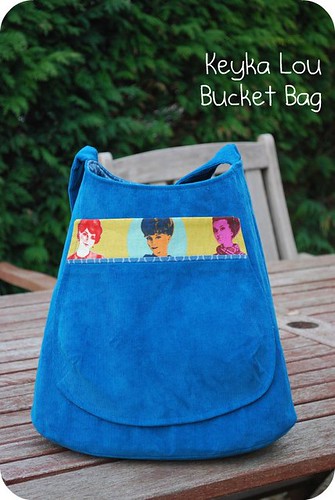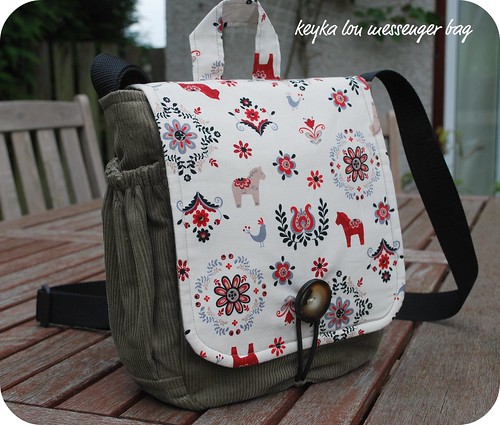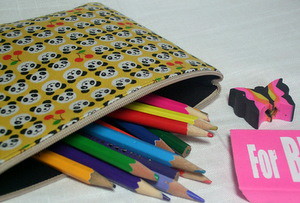I haven't settled on particular interfacings yet so this won't be a long post. I will come back to this subject when I've nailed down my favourites.
On the messenger bag I interfaced just as Michelle suggested with cotton batting on the body pieces and iron on fused to the flap. This combined with the cord fabric produced a nice stable but not carboardy feeling bag.

On my Bucket Bag I used Vilene White Firm Flexible Iron on 2VS320 which it a great choice for bags that need a firmer fabric (I used it on the pencil cases as well and I'd definintely use it again on those projects). I'd still like to try out other interfacings on the next version of this as I feel it did make it a tiny bit carboardy. The cord on the bucket bag is very fine and soft so it definitely needed more support. I use this bag every day so any niggles I have about the interfacing used is just me being mrs fussy pants most likely.
I have seen a lot of recommendations for Pellon 101 which you can't get in the UK as far as I know but Vilene G700 is the equivalent so I'll be giving that a go on my next bag project. I found this pdf from Gone to Earh which is a brilliant chart listing the different vilene/pellon equivalents and their intended uses. I'll stick a link to it on my sidebar so it's easy to find.
So that's not a very comprehensive post about interfacings but it's a start. really it comes down to trial and error and your own preferences. I've not tried fusible fleece yet which a lot of people like, at the moment I'm using up all the cotton wadding I've got in my stash instead. It also depends very much on the shape and size of the item you're making and of course the weight of the fabric too. A bag with a lot of seams (messenger bag) will be more stable than a bag with larger pieces and less seaming. Also using cord as an outer fabric means a nice soft but structured bag, depending on the weight of the cord. You can also use calico or any 'unloved' fabric from your stash as sew in interfacing to add weight to a project too.
I've added some links below to other interfacing posts that are a lot more detailed than this one in case they are useful to you. Also Michelle of Keyka Lou has some great tips about interfacing which I'll link to as well.
Interfacing does make a big difference to how a project comes out, like on my Very Slouchy Hobo Bag. I still need to add a better photo to that post and also as a PS to that I did get some of the Vilene S520 but I still haven't used it as it's really stiff so I'm not that keen on it as yet.
So I will come back to this topic again once I've settled on a go-to list of interfacings, bet you can't wait eh! At least I'm not havering on about hoovers or such like.
Anyway I should be making breakfasts and going to the library right now so I'd better go.
Bye for now




No comments:
Post a Comment